 We separate the rumors from the facts about AMD's upcoming Ryzen 3000 chips.
We separate the rumors from the facts about AMD's upcoming Ryzen 3000 chips.from News Tom's Hardware https://ift.tt/2UxkjGy
via IFTTT
 We separate the rumors from the facts about AMD's upcoming Ryzen 3000 chips.
We separate the rumors from the facts about AMD's upcoming Ryzen 3000 chips.If you would have asked us to find the best gaming laptop a few years ago, we would have pointed you to something with an Intel Core i7 processor, dedicated graphics and 8GB of RAM. A lot has changed in the last few years, though, and the best gaming laptops come in every shape and size. Because it’s harder than ever to find the best gaming laptops, we’ve picked out a few of our favorite devices.
And, while plenty of gaming laptops look like ordinary office devices, you shouldn’t ignore them. Thanks to Nvidia Turing Max-Q graphics for laptops, revealed at CES 2019, the best gaming laptops are stealthy – like the aptly named MSI GS65 Stealth. Don’t worry, though, there are still huge desktop replacement laptops like the MSI GT75 Titan if that’s more your style.
So, whether you’re looking for a desktop replacement, packed with an RTX graphics card that can handle Metro Exodus and Anthem with all the bells and whistles, or if you want something thin and light so you can play games in the office, you’ll find something that fits your needs here. We’ve even found some budget models like the Dell G3. And, don’t worry, we’ve tested these gaming laptops ourselves, so you can be sure you’re getting your money’s worth.

These days, many gaming laptop manufacturers seem to be locked into a race to see who can craft the thinnest gaming laptop that doesn’t compromise on power. And, right now, the crown might have to go to the Asus ROG Zephyrus GX701. At just 0.7 inches thick, this monster of a laptop houses an Intel Coffee Lake Core i7 chip, Nvidia GeForce RTX 2080 Max-Q graphics and 16GB of RAM. That means you can crank any PC game under the sun to max settings, and take it with you wherever you go. And, of course, it’s packed with RGB lighting that’ll dazzle anyone that looks at it.
Read the full review: Asus ROG Zephyrus S GX701
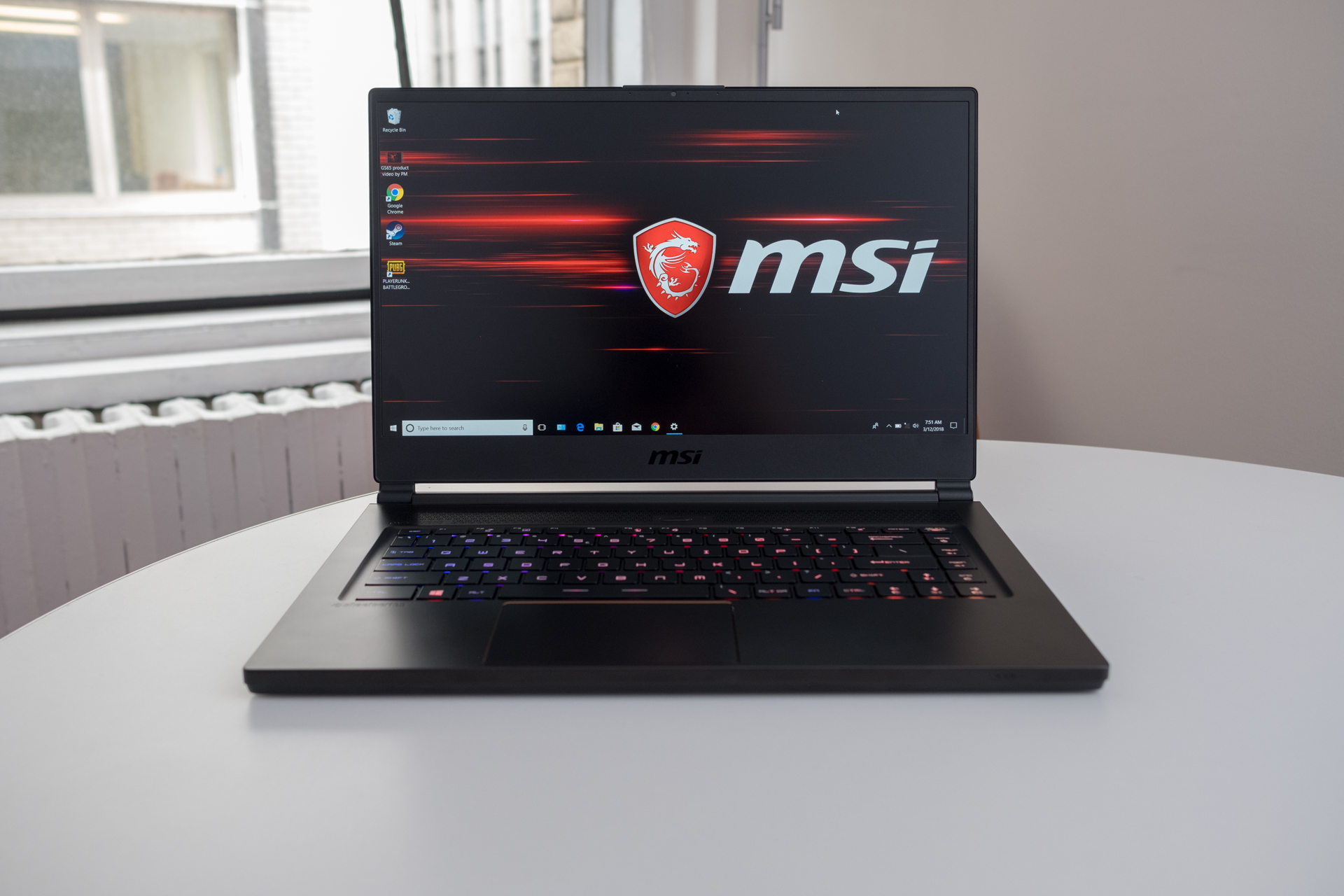
If you want to play some of the best PC games on the move, but you don’t want everyone to know you’re playing games, the MSI GS65 Stealth is the best gaming laptop for you. Coming in at just .69 inches thick and featuring impressive hardware like Intel Coffee Lake processors and Nvidia GeForce GTX 10-series – refreshed with RTX 20-series graphics at CES – the MSI GS65 Stealth packs a ton of power into a very svelte package. There’s nothing you won’t be able to throw at this thing that’ll slow it down. And, thanks to the subdued design, you’ll be able to bring this beefy rig everywhere you go, making it the best gaming laptop on the market right now.
Read the full review: MSI GS65 Stealth
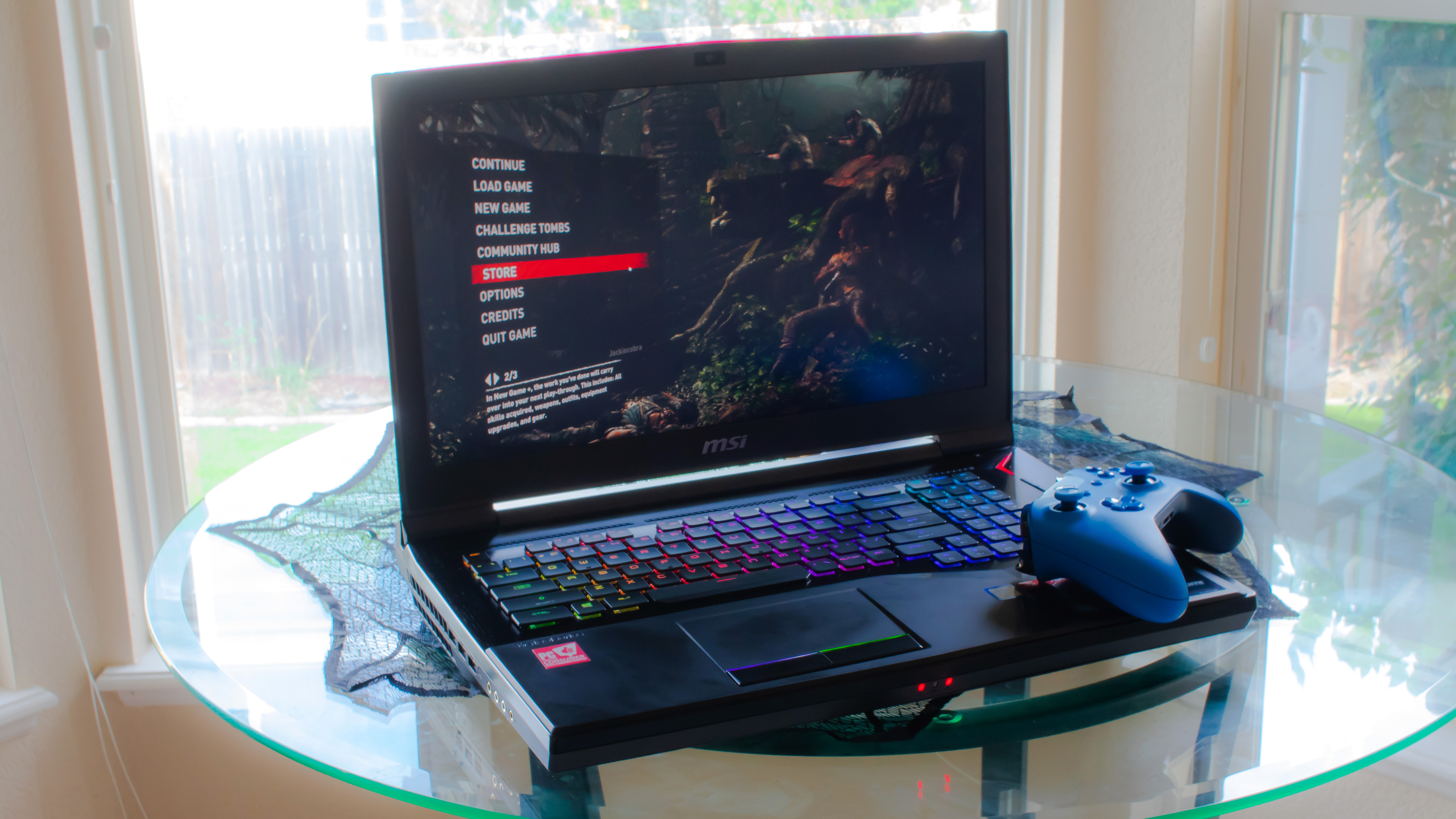
Some gaming laptops just don’t pull any punches, enabling you to run any game you can imagine without breaking a sweat – and the MSI GT75 Titan is one of these laptops. It’s a titanic desktop replacement packing 6-core Intel Coffee Lake processors, plenty of RAM and powerful Nvidia Pascal graphics. You’re not going to be able to carry it around with you, and it’s not going to be something you’ll be caught with in a coffee shop, but if raw power is what you’re after, look no further. Just be ready to break open your piggy bank.
Read the full review: MSI GT75 Titan

Thin and light gaming laptops are everywhere right now, but if you don’t care about that, and want a thick, heavy and monstrous laptop that can demolish any game you throw at it – the Asus ROG G703GI is for you. This is a massive – and expensive – laptop, but it justifies its size and price with gaming performance that rivals the best gaming PCs. Just don’t think you’ll be able to haul it along with you to your local coffee shop without its two power bricks – or awkward stares.
Read the full review: Asus ROG G703GI

The Razer Blade might still have an unbearably edgy name, but now that the 2018 version is here, it’s fitting – it’s still on the cutting edge. Beyond its insanely high-end specs and beautiful chassis, it can fit up to a 4K Ultra-HD display, with the specs to actually back it up. That’s not to mention the expandability that the Razer Core X opens up. It might be expensive, but if you’re a Razer fan looking for the best gaming laptop, it might just be for you.
Read the full review: Razer Blade
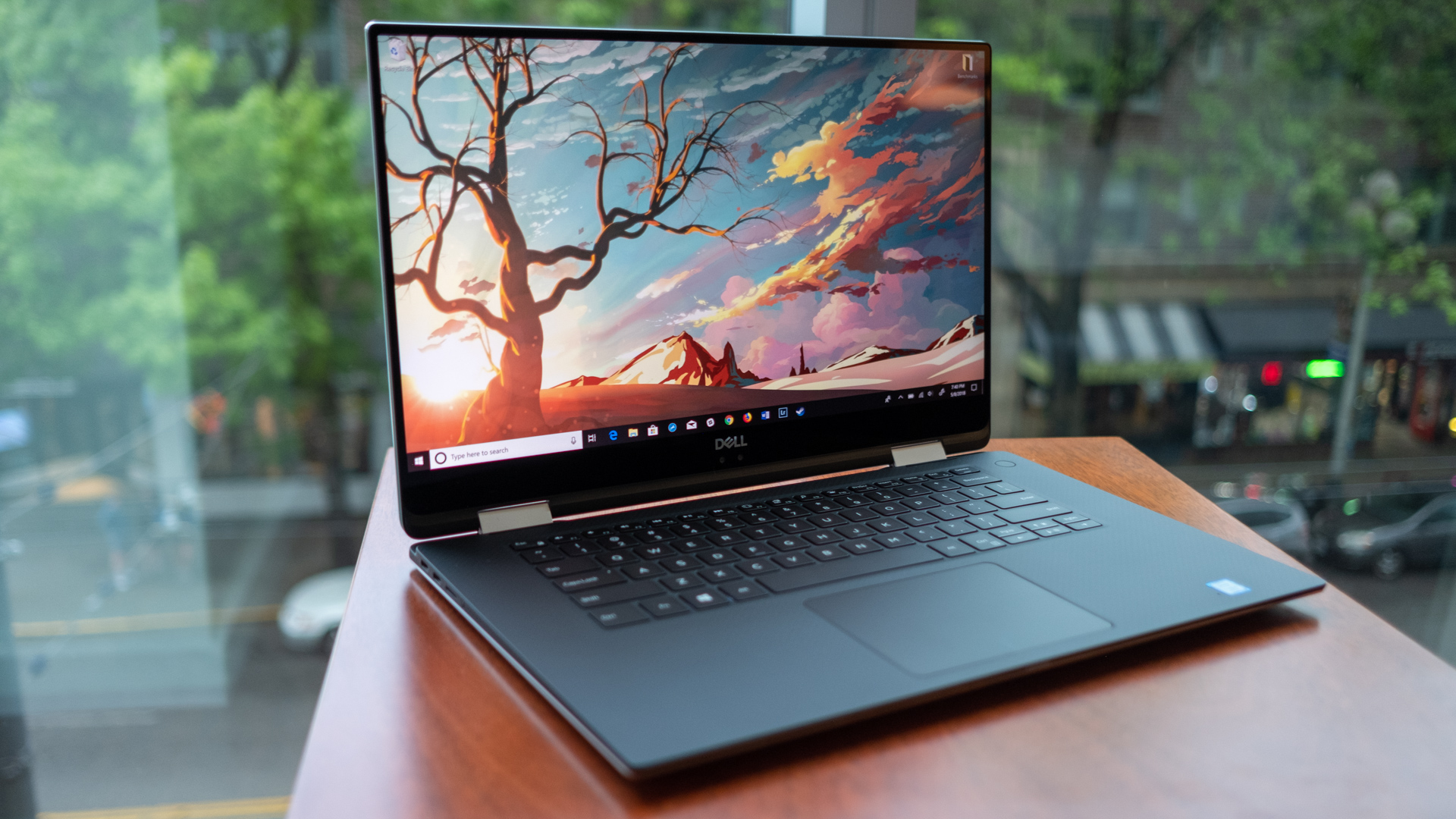
If you want one of the best gaming laptops, but don’t want to miss out on the ultra-portable craze, you need to consider the Dell XPS 15 2-in-1. Packed with an Intel Kaby Lake G-series processor, this gaming laptop can keep up with its competitors rocking a GTX 1050 without featuring truly discrete graphics. And, when you combine that gaming horsepower with a chassis that looks this good, it’s a total win – even if you have to endure some fan noise to get there.
Read the full review: Dell XPS 15 2-in-1
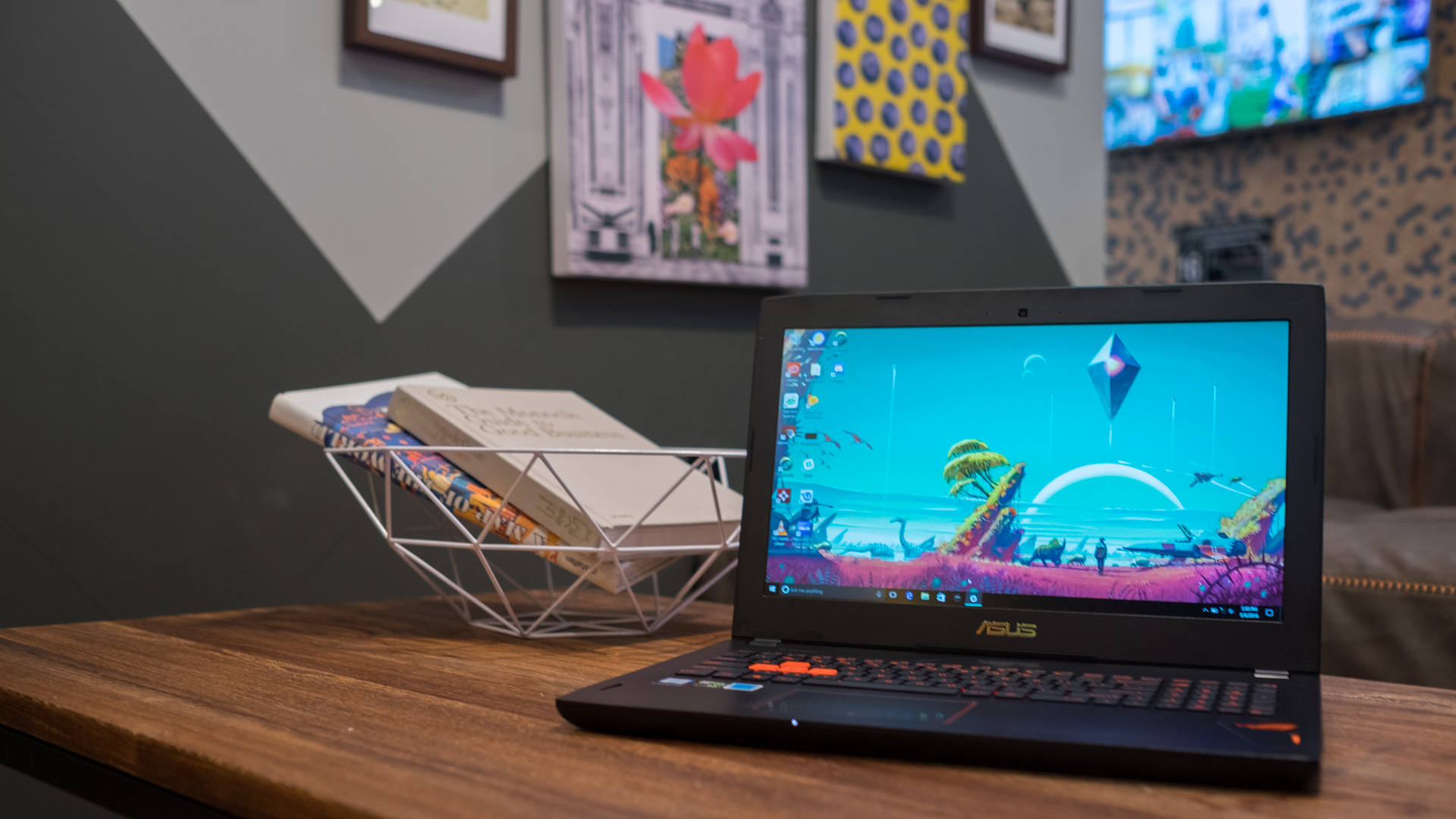
It may not boast the most innovative design, substituting the usual black and red aesthetic for one that makes it feel like Halloween all year round (no complaints here). But, it’s undoubtedly one of the best when it comes to gaming in 1080p. In fact, we were able to crank the setting s all the way up in Overwatch without ever straying below 60fps. It doesn’t feature the longest battery life, but the screen, power and onboard sound system more than make up for it.
Read the full review: Asus ROG Strix GL502

When you’re setting out to buy one of the best gaming laptops, one of the first things you’ll likely notice is how expensive they can get. Luckily, the Dell G3 15 is not just extremely affordable, but it punches above its weight class with great 1080p gaming performance. With up to an Nvidia GTX 1060 GPU, you’ll be able to play all the latest games at 1080p without breaking a sweat, even if it’s not at max settings all the time. And, that blue on black color combo is quite a looker, if that’s your aesthetic.
Read the full review: Dell G3 15

It used to be that the best gaming laptops were thick, bulky devices that were necessary to experience the best PC games on the move. Those days are over. The Gigabyte Aero 15 packs a 6-core 8th-generation Intel Core i7 processor and a GTX 1060 into a package that allows it to pass as an Ultrabook. And, thanks to that beefy 6-core processor, it’s not just one of the best gaming laptops – it’s one of the best laptops, period.
Read the full review: Gigabyte Aero 15

Ever since Intel unveiled its i9-8950HK, we just knew that it would find its way behind the best gaming laptops 2018 had to offer, and we’ve been proven right heading into 2019. The Alienware 17 R5 is a beast of a gaming laptop with the aforementioned CPU and an overclocked GTX 1080. If you’re willing to get an absolute tank of a laptop that weighs nearly 10 pounds, this hulking computer will demolish any and all games you throw at it. Just don’t expect to throw it in a bag without some severe back pain.
Read the full review: Alienware 17 R5
Gabe Carey and Bill Thomas have also contributed to this article
Now that macOS Mojave has finally blessed our Mac hard drives, we have access to key iOS apps, like Stocks and News. However, macOS still has its own rich library of apps. Your Mac can do everything from playing games to getting all your work done. AT the end of the day, it’s the software, more than anything else, that keeps people coming back to the Jony Ive designed hardware each year.
There are so many things you can do with the best Mac apps, so some may not appeal to you. However, there are some Mac apps like Evernote, the best note-taking app around, that anyone can find a use for.
And, you won’t find all of these apps on the Mac App Store, but they’re still worth your consideration. With this guide, we found all the best apps, most of which we use every day. From free apps and utilities to professional music applications, these Mac apps will make even the best Mac better than ever.
Bill Thomas and Gabe Carey have also contributed to this article
Check out our Linux vs Windows vs Mac - OS comparison video below.
A computer free of annoyances simply doesn’t exist – and Macs are no exception. For the longest time, it’s been impossible to use our MacBooks – unbound by the chains of a power adapter – while video outputs to an external monitor. As we all know here at TechRadar, Apple’s laptops will automatically enter sleep mode when the lid is closed. This can be a huge inconvenience should you prefer the sheer magnitude of one of the best monitors as opposed to a 12, 13 or 15-inch screen.
Fortunately, Amphetamine allows you to continue using your MacBook while closed. Before, you could do this by using a similar app called Caffeine, but we prefer the UI features you get with this freebie. Not only does it fit in naturally with the rest of your Menu Bar items, but Amphetamine also supports hotkey commands as well as deactivation reminders – not to mention there are no annoying ads in sight.
While you’ve been able to snap programs to the edge of the screen in Windows since Windows 7, Apple didn’t have a solution until OS X El Capitan. What’s more, even then it lacked some of the comprehensiveness of Microsoft’s alternative. Luckily, HyperDock gives us that full-fledged functionality we so desperately crave, allowing anyone with a Mac to apply it to both the app Dock and windows.
Within Windows, you can just drag a window to the left or right edge of the screen, and it’ll automatically snap to fill that portion of the screen. This makes it much easier to be productive on the desktop without wasting time dragging windows from the corners. For the Dock, hovering over apps activates something close to Windows 7’s thumbnail previews, giving an overview of a window that can be accessed by a click or closed directly from there. It’s extremely useful.
If you have recently picked up a Mac and miss some of your old Windows applications, don’t fret – Parallels Desktop 13 can bring them back. Instead of having to dual-boot your Mac into a Windows partition, Parallels Desktop 13 allows Windows and macOS Sierra to co-exist side by side, and you can even run Microsoft-only programs such as Visual Studio 2015, or the Windows versions of the company’s Office 365 apps, alongside your native macOS ones.
All you need is a Windows 10 license – so prepare to buy one if you haven't already. Or, alternatively, you can use Parallels to try a handful of free operating systems including Chromium (a free distribution of Chrome OS) or Linux Debian. The latest version of Parallels in particular has seen improvements such as Touch Bar support, better resolution scaling for Retina displays and picture-in-picture for using other operating systems in conjunction with macOS.
If you’re anything like us, working on just one monitor or screen is just painful. Portable monitors are still fairly expensive (and bulky), luckily, though, you can use an iPad instead using a nifty app called Duet. Developed by ex-Apple engineers, it works by tethering your iPad to your Mac using one of Apple’s Lightning cables and firing up the app on both devices.
You can then drag apps and windows onto your iPad’s screen just like you would with a second monitor, and if you have a more recent iPad with a Retina display, you’ll get the full benefit of all those beautiful pixels. Just realize that the bandwidth isn’t quite what you would get with one of the best monitors, so it can be a bit laggy when you bump the quality up. But it’s still better for watching videos, reading websites and typing up documents.
Atom is a text editor that's primarily designed for coders, but its flexibility and customization options make it a viable option for many different types of users. That's because of two reasons: first, you can download a number of different Packages - effectively plug-ins - to make it bend to your will. It can be transformed into a Markdown editor for writing blog posts, for example, or you can hook it up to Evernote for storing notes in the cloud.
There's at least 10 different word counters out there, and you can even add typewriter sound effects as you hammer out your delicious prose. Atom is also infinitely customizable on the visual side thanks to an editable back-end, allowing you to do anything from changing the font size, line height and colors to giving the caret Word 2016-like elasticity.
Whether you’re a big time producer or you just like making some jams in your downtime, Macs are kind of known for being among the best laptops for music production – and Logic Pro X is a big part of that. Developed by Apple itself, its accessible interface hides a ton of advanced functionality. The latest version also comes with a svelte design, 64-bit architecture and a new session drummer that will save you from having to drop more cash on a drum machine (or a real drummer).
It also works in natural harmony with iPads, providing a touch-based alternative method of creating song structures to dragging and dropping blocks in the main visual editor. Whether you're a seasoned producer already (Sia used the app to record her hit song 'Chandelier') or are looking to upgrade from Garageband, Logic Pro X likely has what you need.
An uncomplicated app, but a great one, to do app Wunderlist’s selling point is its cross device functionality. It’s available on Mac, PC, Android and iOS, allowing you to sync your to do list wherever you’re using macOS’ Handoff feature.
Once you've started a list, you can schedule reminders, add notes and embed it into the macOS Notification Center using a widget. Team-based features are unlocked by signing up for Wunderlists’s pro subscription, and you can add files of any size without running into limits.
Evernote has morphed into a mighty note-taking app over the years. While some people will say that it's too bloated, the sheer number of things that you can do with it still makes it best-in-class. You can type up notes, obviously, organizing them using a combination of folders and tags. You can even embed Google Drive documents, which are accessible in a click.
There's also the ability to set reminders, share notes with friends, find information related to notes using Evernote's 'Context' feature, create lists, and favorite notes that you frequently return to. Better yet, all of your notes are synchronized using the company's servers, making them accessible on nearly any PC (through a browser or the native Evernote app) or mobile device in the world. The paid version lets you use Evernote with more than two devices while upping the amount of data you can sync each month.
GIMP or GNU Image Manipulation, is one of the best free image editing apps out there. It’s a great alternative to Adobe Photoshop and comes with a wide array of pro-level functions that let you tweak existing images in a range of formats or create fresh ones from scratch. Features include layers, highly customizable brushes, automatic image enhancing tools and filters. You can do even more with plugins, which are available to download from the GIMP Plugin Registry.
These days, balancing features with simplicity and good design in the best Mac apps is critically important. However, unlike Word 2016, or even Apple’s own Pages, Ulysses has an extremely minimalistic interface. This allows you to get on with writing without being distracted by so many buttons and menus. The app uses its own version of Markdown – a type of text formatting engine – that allows users to focus on their writing in a way that not only makes organization easier but also makes exporting easier – Ulysses will format it in an attractive way, using one of many export styles, when you’re done writing.
There's a handy attachments bar on the right-hand side that features an attractive word counter and lets you write notes to assist you in your writing. Notes can be accessed anywhere thanks to iCloud support, so you can pick up your iPad and carry on where you left off using macOS's Handoff feature.
Sometimes you want to play your Xbox One, but you can’t because your roommate has decided to use the living room TV for watching the whole run of Ugly Delicious in one sitting. Now, you could technically stream Halo 5 or Sea of Thieves if you had a Windows PC. However, you just have a Mac.
That’s where OneCast comes in, a third-party work of reverse engineering performed by an independent developer to bring Xbox One game streaming to macOS. It works as easily as connecting both your Mac and Xbox One to the same network and subsequently logging in to Xbox Live. It works pretty well in our experience, though you should have both systems connected to your modem via ethernet if possible.
Nobody can deny that the best Macs are great for network admin uses, and if you need to manage a bunch of Windows devices, being able to remote into a PC to diagnose problems is critically important. Luckily, Microsoft has provided an app just for that.
With Microsoft Remote Desktop 10, you get an officially-supported app that gives you remote access to any PCs on your network – as long as you’re a network admin or an authorized user. It can be a bit of a pain to set up, and the PC you’re trying to access will need to be running Windows 10 Pro. But once you get going, you can access files, copy/paste across desktops and even run games – though, we don’t recommend that last bit.
Microsoft Remote Desktop 10 is a godsend for network admins and IT professionals, and is easily one of the best Mac apps you can download right now.
Microsoft Office has been available on Mac for years now, but you always had to go through a couple hoops to download it. We’ve been asking for a release on the Mac App Store for a while, and, well, it’s finally here.
We’re sure we don’t really need to go into too great of detail what Microsoft Office is, but it’s essentially Microsoft’s suite of office apps, from Word to PowerPoint to Excel. It’s absolutely an essential app to have, but you should keep in mind that you’ll have to get a subscription to Office 365 to use it.
It’s one of those Mac Apps that should be essential for any professional, and the fact that it’s finally on the Mac App Store means that you don’t have to worry about keeping it updated.
The market for disk optimization apps is neither desolate nor particularly interesting, particularly on the Mac – where Apple usually does a good job of cleaning up its drives on its own. However, for a program that’s far more intuitive and user friendly than, say, the built-in Macintosh HD storage management software, your best bet is to turn your attention to Dr. Cleaner. This app splits up all your data into easily digestible chunks that would otherwise be obtuse.
Dr. Cleaner groups up all the trash on your Mac and labels them in groups like ‘Junk Files’ and ‘Big Files’ – rather than listing off 30GB of documents and 10GB of iOS files you can’t comprehend. Then, you can look at the file names themselves and decide whether or not you want to keep them on your PC. You can also use Dr. Cleaner to monitor CPU, network and RAM usage as well, for the sake of putting some pep in your aging Mac’s step.
It might be kind of like three apps than just one, but SoftMaker Office 2018 takes all the key features of Microsoft Office and puts them into an interface that tailors to your needs. It comes with a group of programs called TextMaker, PlanMaker and Presentations 2018 that are similar enough to Office 365 without the rolling subscription.
Regardless of whether you need an easy-to-use word processor or a spreadsheet or slideshow creator of equal accessibility, SoftMaker Office has what you’re looking for. And, because it’s still in beta, you can get a complimentary, albeit temporary, license over email if you want to give it a spin. Otherwise, there’s a permanent free version called SoftMaker FreeOffice, but it’s only available on Windows, Android and Linux.
Since you’re obviously going to install all of the other apps we’ve mentioned, you’re going to need at least a utility that, well, declutters your desktop. And, while macOS Mojave brought Stacks to your Mac, making everything less cluttered, Unclutter goes even further. So, whether you’re a frivolous notetaker or a temporary file hoarder like we are, Unclutter will help keep everything in one place, rather than scattered across several folders.
It’s a brilliant idea made even better by the fact that it can be configured for use with gesture controls. At any given point, you can swipe down from the top of the screen with two fingers on the trackpad (or one on the mouse) to reveal a trio of windows that can be concealed and re-summoned whenever you please.
When you’re out there hustling every day, it’s easy to lose track of messages. With so many social media companies, SMS platforms and instant messaging services to choose from, most of us also have a number of different accounts used to administer to all of those messages. But what if you only had to log into one?
That’s the central idea in Franz, a messaging app that allows you to view and send messages in WhatsApp, Facebook Messenger, Slack, HipChat and more. It lets you seamlessly switch between any of these apps as easily as you can toggle between Slack workspaces. Best of all, there’s no limit to the amount of services you can use at once. That way, even if you have 10 Facebook accounts for whatever reason, all of your messages will be visible in the same place.
If you’re anything like us, you have tons of packages coming in all the time – and it can get hard to keep track of everything. Luckily, there’s an app for that. With Deliveries, you can keep track of all your incoming deliveries in one place in an easy-to-read interface.
It will notify you whenever there’s a change in your delivery, syncing the information between macOS and iOS so you are on top of things, even on the go. All you have to do to track a package is hit Command + New and paste in the tracking number – that’s it. It really is one of the best Mac apps for anyone with a busy mailbox.
If you do a lot of cooking, and you have a hard time keeping your recipes organized – especially on a digital platform – you’re going to love Paprika. With this app, you can download any recipe you find online, and it will automatically format it in a way that’s extremely easy to read.
What’s more, if you download the iOS app, you’ll be able to sync your recipes between all of your devices, so that you can keep tabs on the ingredients you need when you run to the store in a panic.
Sometimes, life gets hectic, and you need some help getting everything organized. Luckily, there’s an app for that. Fantastical 2 is the most fully-featured calendar and reminder suite we’ve ever seen.
You’re able to set events and reminders using natural language, and it’s fully compatible with your iCloud reminders. There’s also an iOS app for iPhone and iPad that will effortlessly sync with the Mac app, so that you can stay on top of your busy life no matter where you are.
School is expensive, no matter what level you’re at: tuition, books, food – it all adds up. Fortunately, with one of the best laptops for students, you can save some money. Not only will these budget minded laptops have great style and performance, but they’ll do it with an eye for value.
Trying to save up for a new laptop when you’re buying textbooks can be hard, so the best student laptops don’t need all the best processors and graphics cards. You won’t be limited to Windows 10, either – the best Chromebooks are among the best laptops for college students – as you’ll be able to get all your work done while saving a ton of cash.
We know that school gets stressful, but that’s why you should make sure you only have the best student laptop. No one wants the added stress of running around campus with a dying laptop – especially when you’re in the middle of a project. So, we gathered up some of the best laptops for students, because no one wants to limit themselves to an old clunker just to get schoolwork done.
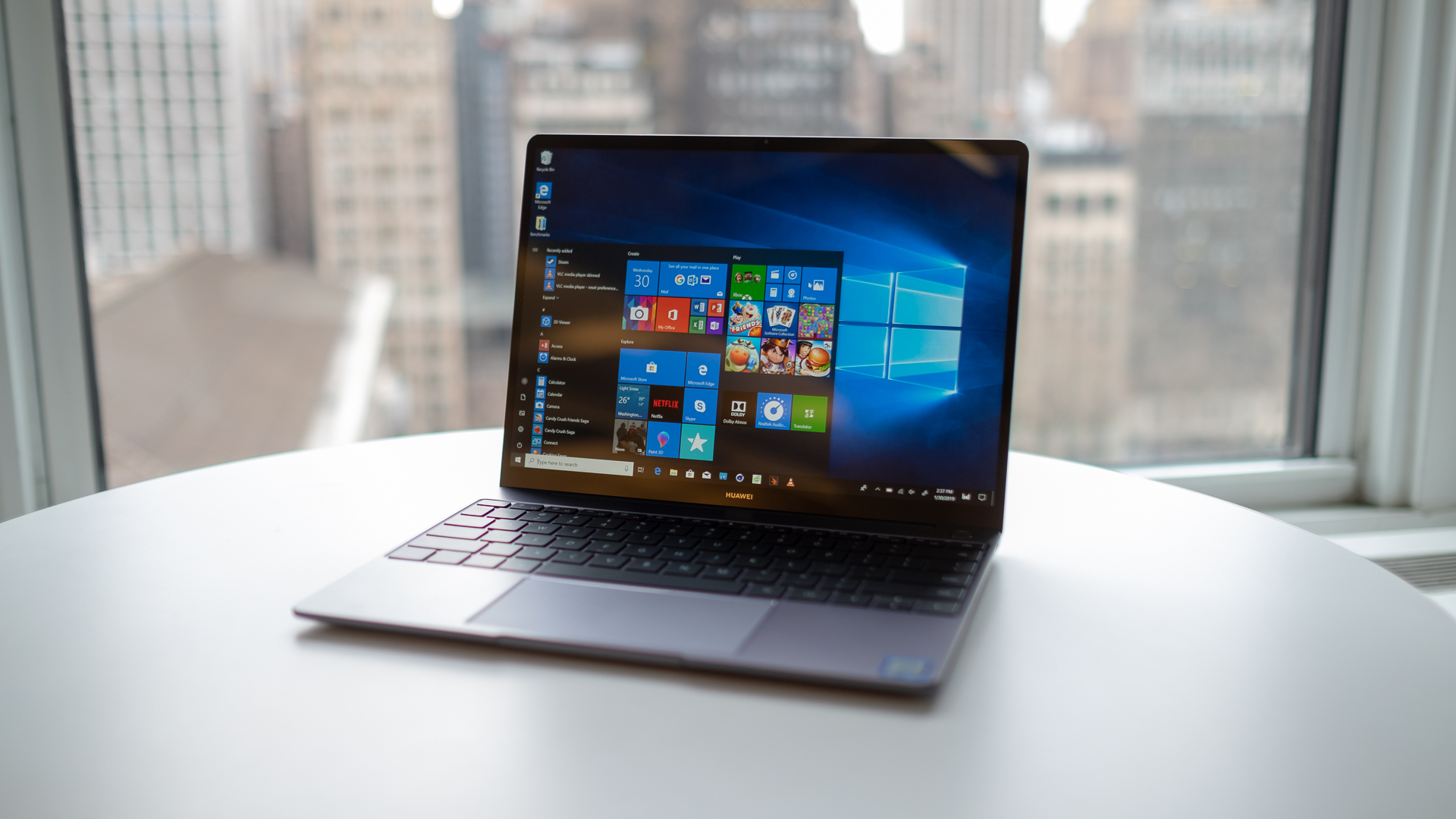
Here at TechRadar, we love it when a laptop can perfectly balance price and performance without any compromises, and the Huawei MateBook 13 comes closer to hitting that perfect balance than anything in 2019 so far. Thin, light, quick and affordable, this beautiful 13-inch Ultrabook will let you get all your work done in style, without dragging down on your wallet. The battery life is a little weak, but that’s a worthy sacrifice to make here – just carry the charger around with you.
Read the full review: Huawei MateBook 13

Once in a while, we’ll get our hands on a laptop that completely flips the script – the Huawei Matebook X Pro is one such laptop. Not only does it feature powerful, modern components like 8th-generation Kaby Lake R processors and 16GB of RAM, it’s also beautiful – incorporating all the latest trends in Ultrabook design. What’s more impressive, it manages to do all this while being much more affordable than the competition. This is what makes it one of the best laptops for students – you’re not going to get a more powerful laptop for less cash than the MateBook X Pro – at least until the MateBook X Pro 2019 gets here.
Read the full review: Huawei Matebook X Pro


The Dell XPS 13 has always been among the best laptops – for college students, professionals and even everyday users. But, now that Dell has brought back the entry-level option, it’s affordable for college students once more. Dell has also fixed the biggest bugbear – the webcam. Dell found a way to move the webcam up to the top of the display, so that your friends won’t have to stare up your nose when you’re in a video call.
Read the full review: Dell XPS 13

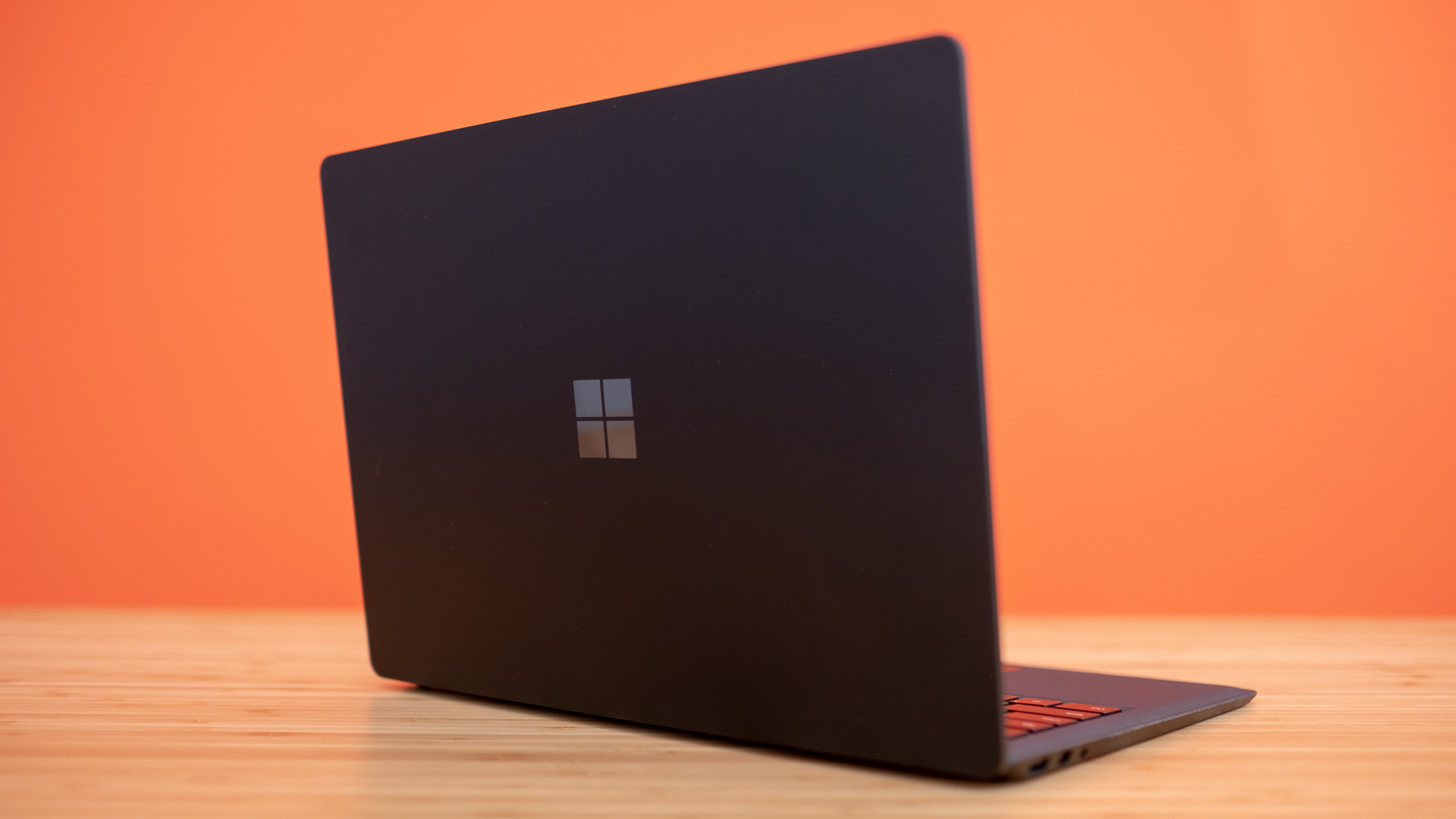
While the first Surface Laptop was already a great laptop for students, it was held back by sub-par performance, a lack of ports and Windows 10 in S Mode. With the Surface Laptop 2, though, everything is better – except for the ports. You’re getting quad-core Kaby Lake Refresh processors, full-fat Windows 10 Home and a sleek black color option. We wish it had even a single USB-C port, but that doesn’t change the fact that you’ll be able to get all your work done in style with this laptop.
Read the full review: Surface Laptop 2


The way we look at it, the best laptop for college students will strive to hit a golden balance between price and performance, without looking like you pulled it out of your dad’s study. The Microsoft Surface Go, then, isn’t just one of the best Windows tablets, but it’s one of the best laptops for college students, period. Don't’ be fooled by the low power components, either – Microsoft has engineered this 2-in-1 to be able to keep up with your schoolwork without breaking a sweat. You can’t do much better than the Surface Go, especially if you’re on a budget.
Read the full review: Microsoft Surface Go

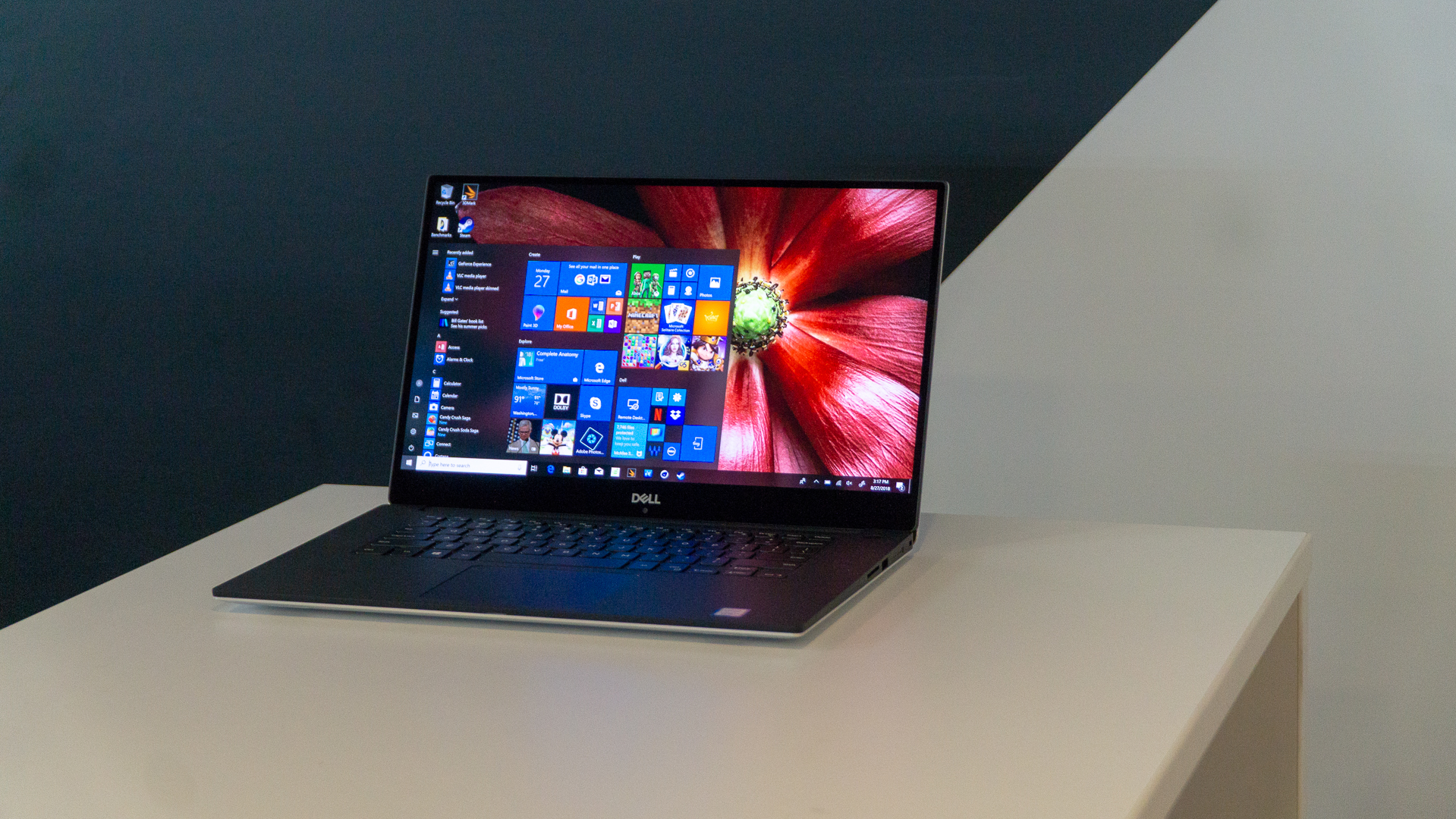
Dell’s XPS lineup has been among the best laptops for college students for years now, and the new XPS 15 is no different. Taking the approach of ‘if it ain’t broke, don’t fix it’, not much has changed year over year – but that’s not necessarily a bad thing. What you’re getting here is a reliable Ultrabook with enough horsepower to carry you through all of your coursework without costing an arm and a leg. While the entry level is perfectly fine for most people, you can configure this thing with up to a Core i9 CPU and 32GB of RAM, transforming the Dell XPS 15 into a killer media editing workstation. We just wish Dell would move that webcam.
Read the full review: Dell XPS 15

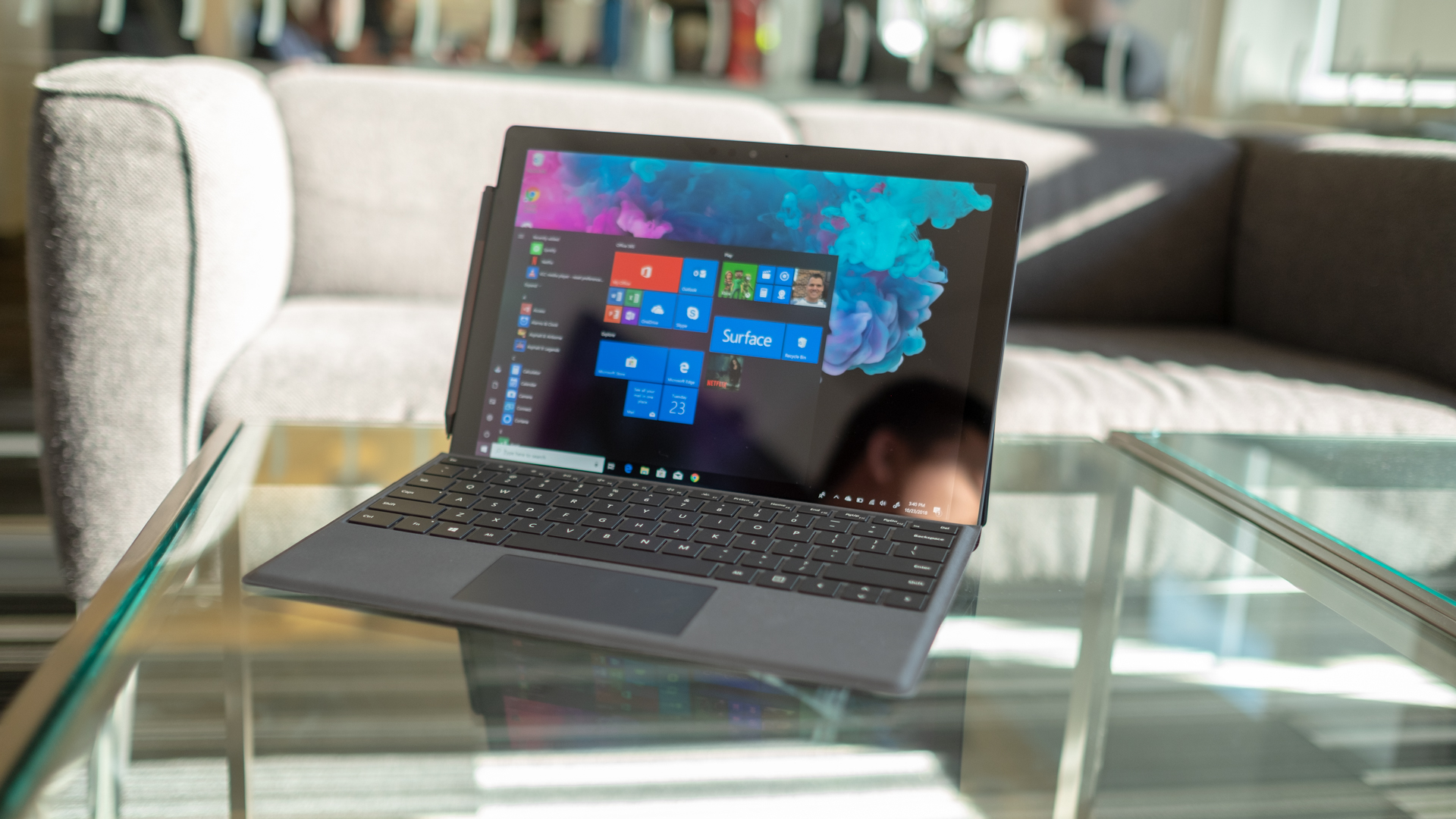
The Microsoft Surface lineup has built a reputation for itself for being among the best Windows devices out there – gorgeous touch screens, incredible performance and long battery life. The Surface Pro 6 continues this tradition, even if it doesn’t bring anything new to the table. What you’re getting here is a speedy Windows tablet that can effortlessly turn into a laptop through the Surface Type Cover. You can get your work done and then effortlessly transition into break time.
Read the full review: Surface Pro 6

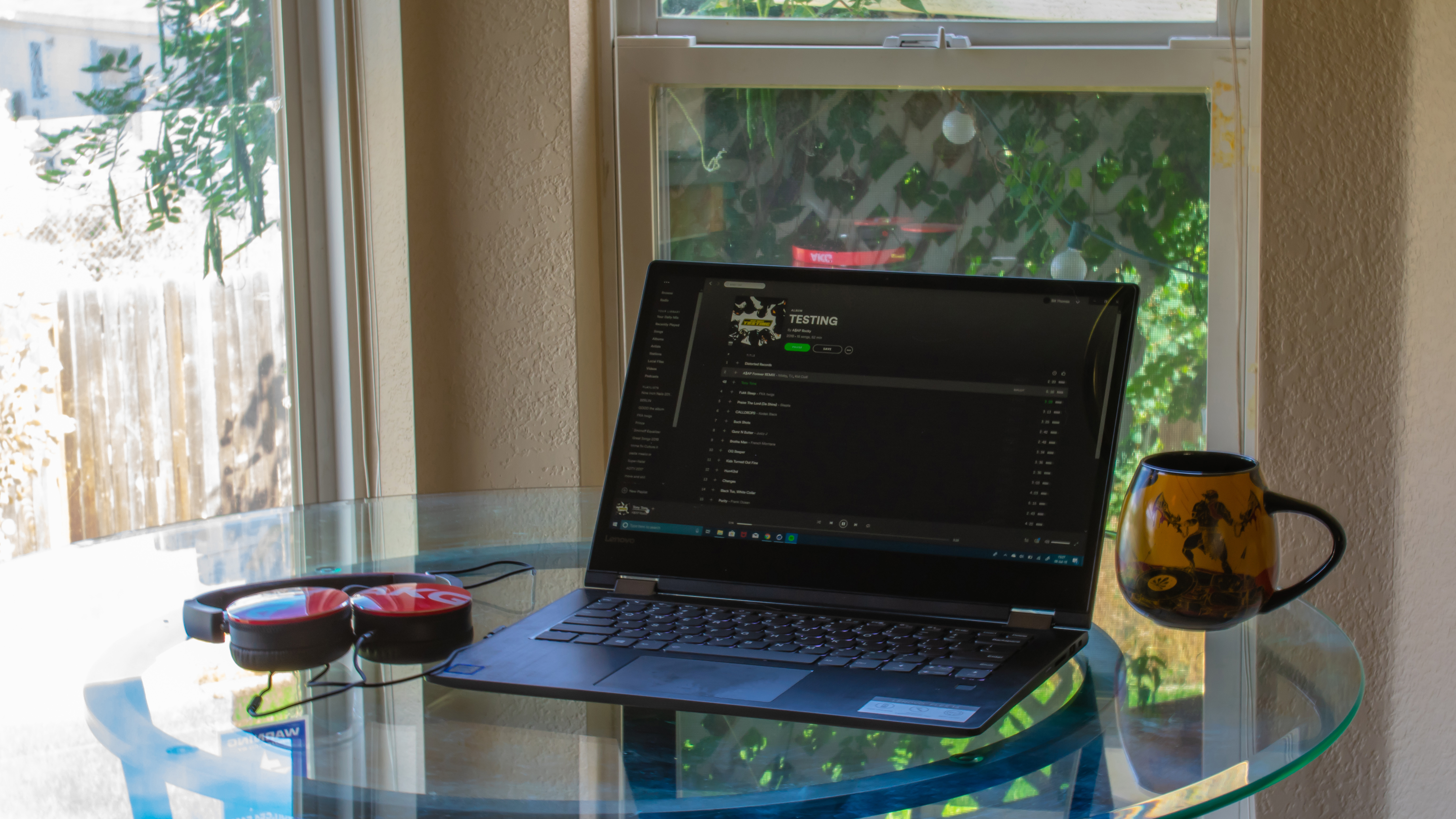
College gets expensive – you can’t avoid it. That’s why the best laptops for college students will offer awesome performance at a decent price, much like the Lenovo Flex 14. At under a four-digit price, there’s something to be said about getting an Ultrabook that can handle anything the semester throws at you – and the Lenovo Flex 14 looks good to boot. You won’t find a better laptop at a lower price.
Read the full review: Lenovo Flex 6 14

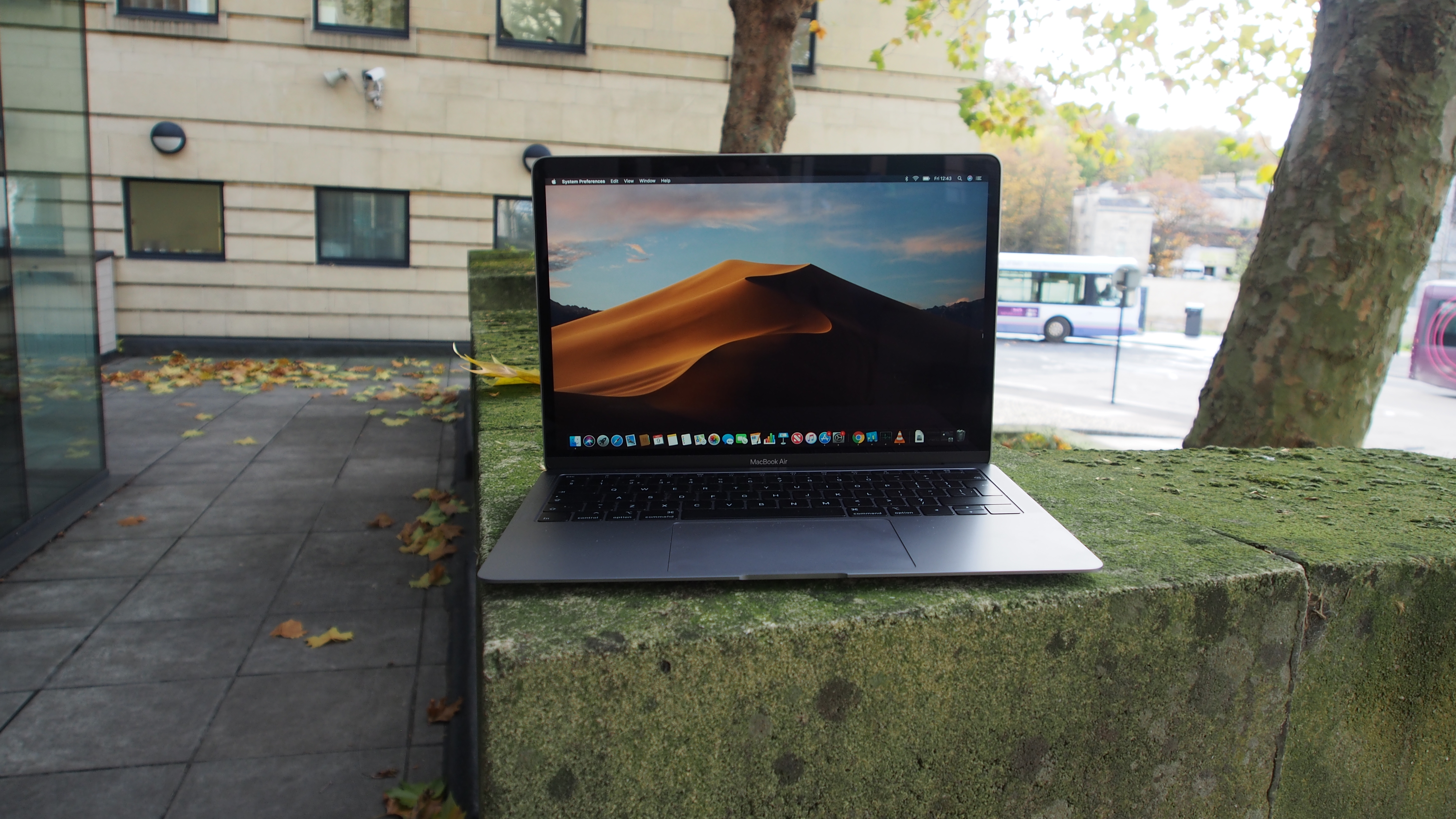
We were left waiting for Apple to renew the MacBook Air for years, as it languished with a 5th-generation Intel Core processor and an out of date, low-resolution display. Thankfully, those days are over. Apple has ushered the MacBook Air into the modern age, with 8th-generation fanless processors, a thinner and lighter design, and perhaps most importantly – a Retina display. No more do you have to compromise on modern features if you want an “affordable Mac”, and that makes the MacBook Air one of the best laptops for college students.
Read the full review: MacBook Air


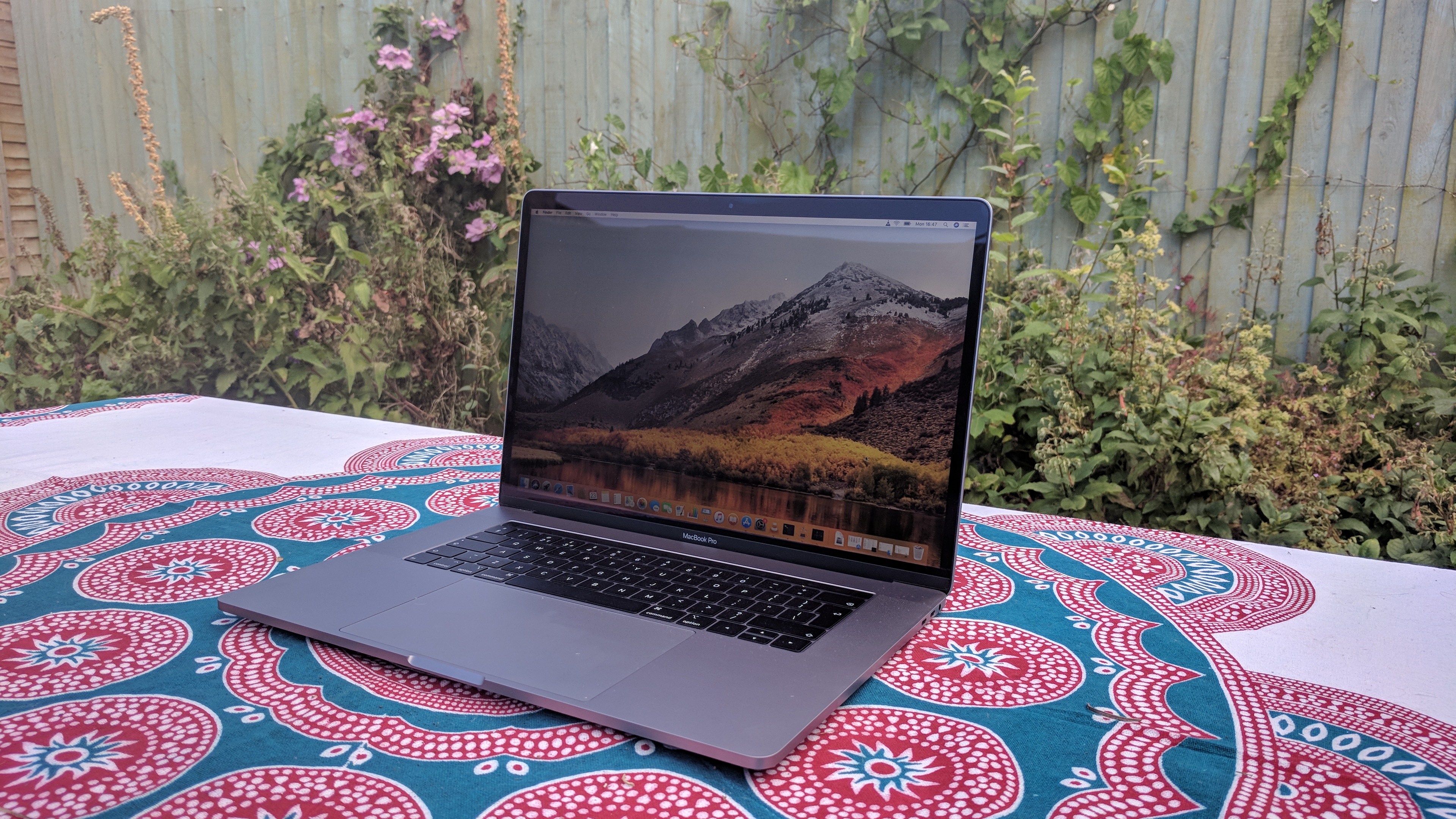
If you’re not too concerned with cash, and you’re a macOS addict (we get it), the 2018 MacBook Pro is the most powerful MacBook that’s ever existed. With its impressive hexa-core processors, and up to a whopping 32GB of memory, this cupertino workstation will get you through whatever you throw at it. It also includes the much-improved third generation Butterfly keyboard that will not only be less distracting to the students around you, but will be less prone to failure if some dust comes within 10 feet.
Read the full review: MacBook Pro 15-inch (2018)

Bill Thomas and Gabe Carey have also contributed to this article.
We’re sure to get a new iMac soon, and we’d love to see the iMac 2019. Because, almost immediately after the iMac 2017 hit the streets, backed with a 7th-generation Intel Kaby Lake processor, INtel announced the new 8th-generation Coffee Lake chips – which have been succeeded by 9th-generation Coffee Lake Refresh chips. So, the iMac is currently two generations behind the curve when it comes to silicon, but we think the iMac 2019 could level the playing field.
Given the surprise announcement for the MacBook Pro 2018, we could see something similar happen with a new iMac. There has been some speculation that the iMac would release with the new Mac mini and MacBook Air, but it looks like we’ll have to keep waiting.
Instead, Apple will likely stay quiet about the iMac 2019 until it’s ready to release the all-in-one. Until we hear more about a new iMac from Apple, be sure to keep this page bookmarked, as we’ll keep it updated with all the latest information as it comes out.
The 2017 iMac was revealed back at WWDC 2017, but Apple didn’t repeat themselves last year. And, because there was no Mac hardware at the iPhone XS event, or the October 30 Mac event, we didn’t get a new iMac in 2018. But, we’re hoping to see a new iMac in 2019.
We’re still not absolutely certain that a new iMac will make it to market in 2019, but we seriously doubt Apple will abandon the iMac. Our money would be on a WWDC 2019 announcement: not only are there rumors of the new Mac Pro making an appearance at the show, but we’ve also seen rumors that Apple is going to show off tools for converting iOS apps to the Mac. What better to demo that than a new iMac?
As for when that will be, the WWDC 2019 dates have leaked, so it’ll probably land on June 3.

Again, there’s not much to go on right now concerning what the price of a 2018 iMac might be. Hopefully, the price won’t stray too much from last year’s models, unless there is going to be some seriously large upgrades when it comes to components.
The base price of last year’s iMac is $1,099 (£1,049, AU$1,599), so we’d like to see a similar price with the iMac 2018. Of course, the iMac comes in various configurations (and prices) to suit your needs.
However, recent shortages, especially in Intel’s processors, may lead to an increase in manufacturing costs that Apple will likely pass on to the consumer.
With the high-end iMac Pro starting at $4,999 (£4,899, AU$7,299), we can envision an iMac 2018 costing between $1,000 (£1,000, AU$1,500) and $2,500 (£2,000, AU$3,000).
While we don’t know much of anything about the iMac 2019 , we still have plenty of ideas about what we’d like to see in a new version of the all-in-one. Read on for your wish list of what we want to see out of the iMac 2019.

While we love the look of the iMac, it’s sort of had the same design for the past 12 years, so 2018 could be a great year to tweak the look. That could mean a minor revision, such as slimming the body even further, or something more drastic.
Rumors of an iMac redesign have been swirling since a post on Reddit, apparently by a ‘Foxconn Insider’ who worked for the company that builds the devices for Apple, claimed there would be an update to the iMac and its peripherals.
Color-wise, the aluminum design of the iMac has been a staple since 2007, so we wouldn’t mind seeing another color option with the iMac 2019 – perhaps a Space Gray version, like the iMac Pro?
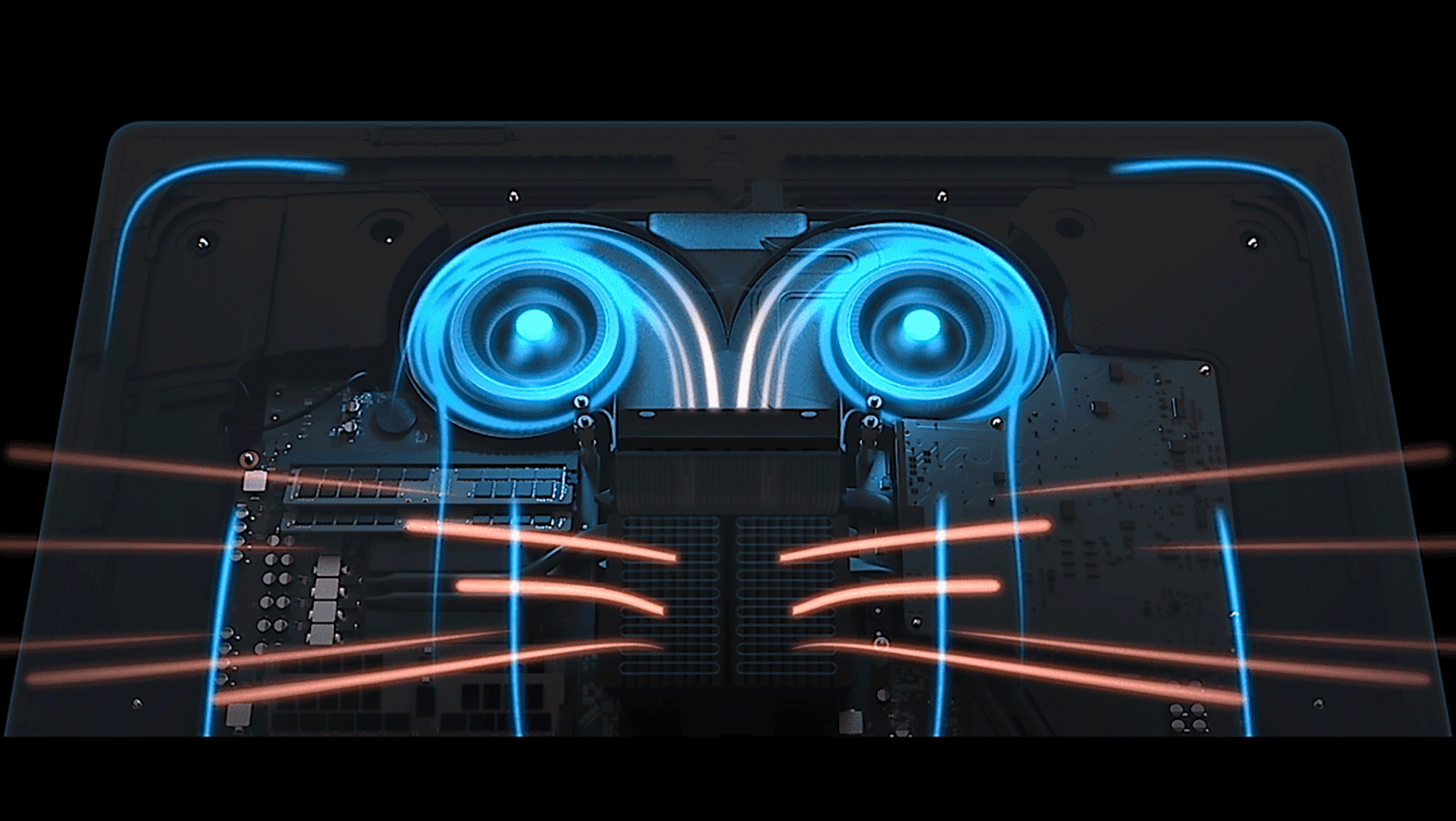
The iMac Pro is a fantastic device, and while it is definitely a product aimed at a completely different audience than the iMac 2019 will be, there are a few things the standard iMac could incorporate from its more expensive sibling.
We’d love to see the iMac 2019 ditch the hard drive, and instead stick with solid state drives – this would allow Apple to make it even slimmer, while giving it a huge speed boost. Even better for photographers and filmmakers is if Apple allowed UHS-II SD card support, thereby streamlining the post-production process.
The iMac Pro also features some clever cooling technology to help reduce the heat of the components, again allowing for a thinner design without noisy fans, and we’d love to see that in the iMac 2019 as well.
However, if Apple includes the T2 chip used for security and ‘Hey, Siri’ commands in the iMac 2019, users might have to deal with the fact that Apple locked it out to third party repairs. Make sure you pick up that AppleCare, is all we’re saying.
Oh, and did we mention we’d really like to see a Space Gray iMac?

Whilst we’re getting ideas from other Apple devices, there’s a few things we’d like to see from the iPhone and MacBook appear in the iMac 2019.
For example, how cool would it be if the Touch Bar from certain MacBooks turned up on a redesigned iMac keyboard? Those touch-sensitive buttons would be a fantastic addition.
Also, we’ve been very impressed by the Face ID technology of the iPhone XS and iPad Pro, so if Apple is thinking of upgrading the FaceTime camera on the iMac 2019, we’d love to see this included, so we could unlock our new iMac with just a glance.
While know pretty much nothing about the hardware that’ll be included in the iMac 2017, we’d love to see it include the latest and best components when it’s revealed.
Now, what we really want to see is Apple shoving the latest 9th-generation Coffee Lake Refresh processors into the iMac 2019, so that Apple fans could have access to these octa-core behemoths. But, even if Apple is more conservative and sticks with an 8th-generation Coffee Lake processor, the iMac 2019 will still get a huge performance boost over last year’s model.
We’re also fairly certain that Apple will use one of its T2 co-processors in the iMac 2019, probably for ‘Hey Siri’ commands, much like the rest of Apple’s recent devices.
Apple is also reportedly working on crafting its own processors, in a rumored program called the ‘Kalamata Initiative”. This will see the Cupertino giant replace all Intel processors with its own by 2020. This is a huge ordeal, to be sure, but Apple seems to be well on the way working on its own chips in a super-secret lab.
Fingers crossed we see some – or all – of these predictions come to fruition.
Gabe Carey has also contributed to this report
Chuwi has reached out to let us know that they are releasing a couple of new products soon. In a big move from the low-cost laptop maker, they are moving up several steps on the performance ladder with these new models which will both feature the Core m3-6Y30 processor. Previously, Chuwi has relied on the less-expensive Intel Atom lineup, most recently with Gemini Lake, so this is a significant departure for the company, and should be exciting to see in the market.
Chuwi’s first Core M powered laptop will be the AeroBook, featuring a 13.3-inch 1920x1080 IPS display with 5mm display bezels, offering the modern look of a thin-bezel laptop. Since shrinking the display bezels shrinks the total size of the laptop, the company has also moved to a micro-bezel keyboard allowing them to keep their full-sized keyboard experience in this smaller chassis.
The main attraction though is the CPU. Intel’s Core m3-6Y30 offers a 2.2 GHz maximum frequency for the two cores and four threads, in a 4.5-Watt power envelope. This should offer a significant performance boost over Atom based Celerons that Chuwi has leveraged in the past, especially in the graphics department where the Skylake based Core m3 offers 24 Execution Units, which is twice what is offered on Atom.
Chuwi is offering 8 GB of LPDDR3 on this notebook, and 128 GB of storage. The company also says you can upgrade the storage to 1 TB, which likely means there will be a user-accessible door to add in a SSD, much like their previous models.
The laptop weighs in at just 2.76 lbs, and is 15 mm thick, meaning it is also very portable. The company is rating the battery life as up to 8 hours, but that’s likely ambitious.
Chuwi is hoping to launch the AeroBook in March for around $499.
The second model is the Chuwi Ubook, which is a 11.6-inch convertible tablet, also powered by Core m3-6Y30. As usual, Chuwi offers a lot of value with their products. In addition to the Core M processor, the tablet will ship with 8 GB of LPDDR3, and 128 GB of storage, and there will be a 1 TB model as well.
There’s plenty of expansion for IO as well, with two USB-A ports and a USB-C port, along with a headset jack, HDMI, and microSD. Unfortunately charging looks to be a 3.5mm barrel plug, and does not use the USB-C connector.
The kickstand is a U-shape, hence the name, and there is infinite adjustability here from 0 to 150°. A 30 Wh battery is rated at up to 9.5 hours, although again that seems ambitious.
The display has pen support as well, and Chuwi is shipping this device with the detachable keyboard at no extra cost.
Chuwi is targeting a price of around $469 for this model, which dramatically undercuts something like the Microsoft Surface Go, which offers a less-powerful platform, less RAM, less storage, and no keyboard at its base price of $400. The 1 TB model is targeting $699.
Both the Ubook and AeroBook look like very interesting devices, plugging a bit of a hole in the market where there’s not a lot of good options in the $400-$600 range. We’re hoping to get some hands on these when they launch and take them for a spin.
Source: Chuwi


